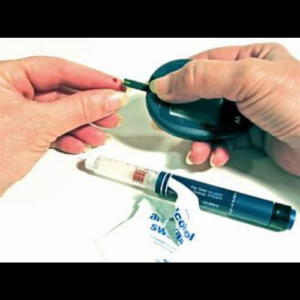
1. Low Blood Sugar Overview
Low blood sugar, medically termed hypoglycemia, occurs when the concentration of glucose in the blood drops below normal levels. Glucose is the primary source of energy for the body’s cells, and maintaining stable blood sugar levels is essential for proper bodily function. Hypoglycemia is a serious condition that requires prompt management to prevent complications.
2. Symptoms of Low Blood Sugar
Physical Symptoms of Hypoglycemia
When blood sugar levels are low, individuals may experience physical symptoms such as:
- Sweating
- Trembling or shaking
- Dizziness
- Rapid heartbeat
- Hunger
- Pale skin
- Fatigue
Cognitive Symptoms
In addition to physical signs, hypoglycemia can affect cognitive function, leading to:
- Confusion
- Difficulty concentrating
- Irritability
- Anxiety
- Blurred vision
- Headaches
Symptoms in Severe Cases
Severe hypoglycemia can result in more serious symptoms, including:
- Seizures
- Loss of consciousness
- Coma
It’s crucial to address hypoglycemia promptly to prevent these severe outcomes.
3.Risk Factors
Certain factors increase the risk of hypoglycemia, including:
Diabetes: Individuals with diabetes, especially those using insulin or certain medications, are at higher risk.
- Skipping meals or inadequate food intake
- Excessive alcohol consumption
- Intense physical activity without sufficient food intake
4.Diagnosis and Monitoring
Diagnosing hypoglycemia involves blood tests to measure glucose levels. Continuous glucose monitoring (CGM) devices are used for frequent monitoring in individuals with recurrent episodes of hypoglycemia.
5.Treatment and Management
Immediate Treatment
The initial treatment for hypoglycemia involves consuming fast-acting carbohydrates, such as:
- Glucose tablets
- Fruit juice
- Regular soda
- Hard candies
In severe cases where the individual is unable to consume oral glucose, emergency glucagon injections may be needed.
Long-Term Management
Managing hypoglycemia in the long term requires:
- Dietary adjustments: Eating regular meals with a balanced combination of carbohydrates, proteins, and fats.
- Medication review: Adjusting diabetes medications, if needed, to prevent recurrent hypoglycemia.
6.Prevention Tips
Preventing hypoglycemia involves:
- Regular monitoring of blood sugar levels
- Eating consistent meals and snacks throughout the day
- Educating family and friends about recognizing and responding to hypoglycemia symptoms
FAQs about Hypoglycemia
Q.How low is too low for blood sugar levels?
Blood sugar levels below 70 mg/dL are considered low and may indicate hypoglycemia.
Q.What are the best snacks for preventing hypoglycemia?
Snacks rich in carbohydrates and protein, such as yogurt with fruit or whole-grain crackers with cheese, can help prevent low blood sugar episodes.
Q.Can hypoglycemia occur in people without diabetes?
Yes, certain medical conditions or medication use can cause hypoglycemia in individuals without diabetes.
Q.How often should blood sugar levels be checked?
Individuals with diabetes should monitor their blood sugar levels several times daily, especially before meals and bedtime.
Q.Is exercise safe for individuals with hypoglycemia?
Exercise can lower blood sugar levels, so individuals with hypoglycemia should monitor their levels closely before and after physical activity. It’s essential to have a snack before exercising if blood sugar levels are low.
Q.What should be done if someone experiences severe symptoms?
If someone experiences severe hypoglycemia symptoms, such as loss of consciousness or seizures, immediate medical attention should be sought. Administering glucagon or calling emergency services may be necessary.

